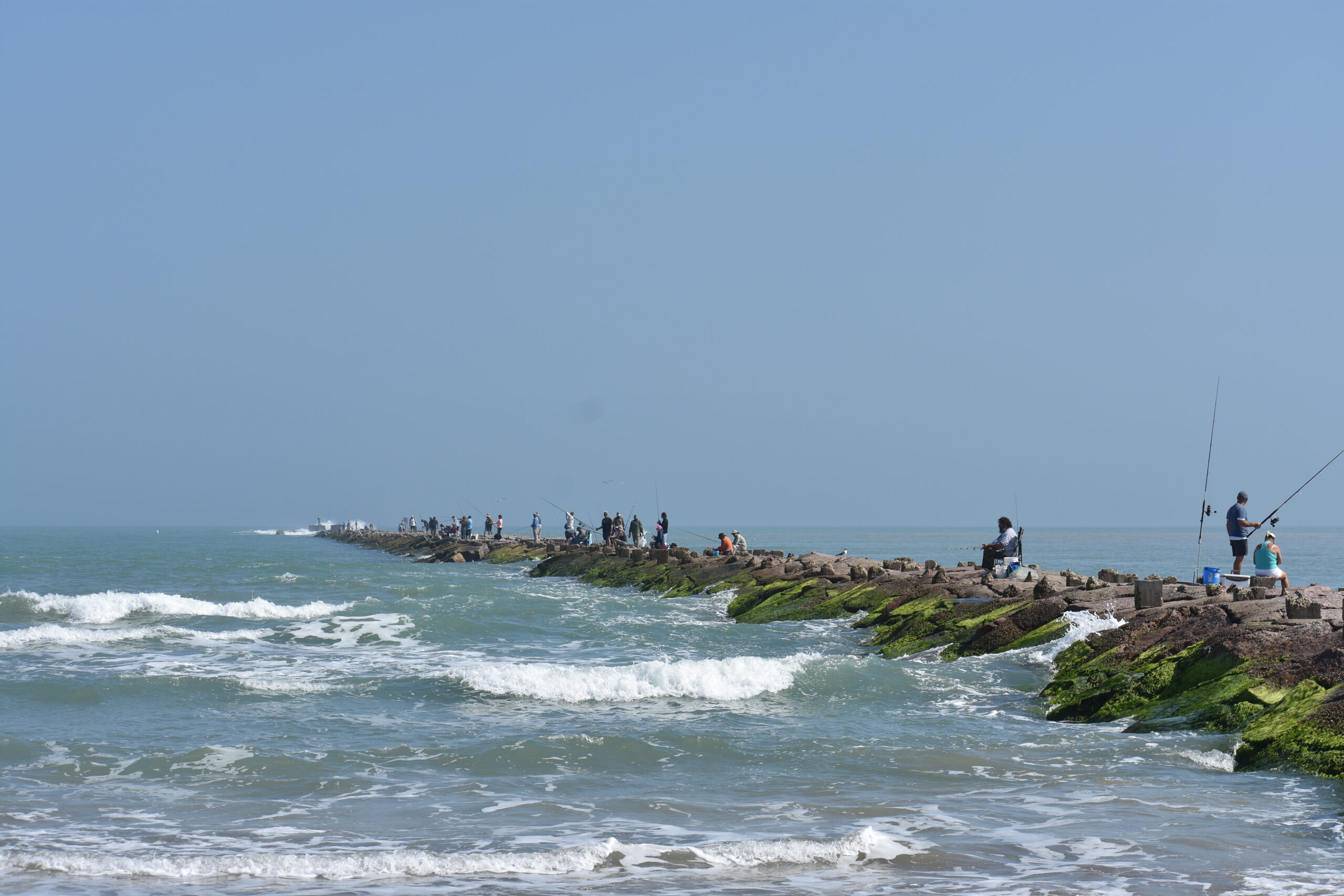Rio Grande LNG receives final investment decision
The massive gas export facility Rio Grande LNG includes the largest greenfield project financing deal in U.S. history, but the export terminal threatens the Texas coast and will lock in climate pollution for years to come.

Rio Grande LNG, despite years of delay, is now officially going forward.
Gas developer NextDecade announced on July 12 a final investment decision for the gas export project, to be built at the southernmost edge of the Texas coast.
NextDecade will move forward with the first three liquefaction trains after obtaining $5.9 billion in financing from Global Infrastructure Partners, GIC, Mubadala Investment Company, and TotalEnergies. In total, the $18.4 billion project financing package amounts to the largest project financing for a greenfield energy project in U.S. history, the company said.
The first phase of the project will have a capacity to produce 17.6 million tonnes of LNG per year (mtpa); a subsequent expansion would bring that total up to 27 mtpa if it were to go forward. For Phase 1, Nextdecade has secured sale and purchase agreements (SPAs) with TotalEnergies, Shell NA LNG LLC, ENN LNG Pte Ltd, Engie S.A., ExxonMobil LNG Asia Pacific, Guangdong Energy Group, China Gas Hongda Energy Trading Co., Galp Trading S.A. and Itochu Corporation.
The announcement included a notice to proceed (NTP) to engineering firm Bechtel to begin construction. NextDecade will offer more details on its construction plans later this month.
“Achieving FID and issuing NTP on RGLNG Phase 1 is a landmark event reflecting years of hard work and dedication by NextDecade’s employees, shareholders, construction partners, equipment suppliers, and customers,” said Matt Schatzman, NextDecade’s chairman and chief executive officer.
In their announcement, NextDecade, TotalEnergies and other participants stressed the benefits of LNG as a climate solution, due to a lower emissions profile relative to coal. However, there is ample evidence to suggest that rampant methane leaks up and down the gas supply chain erase any purported climate benefit for LNG. Instead, many experts view LNG as a major climate threat, locking in polluting infrastructure that comes with operational lifespans that will ensure emissions through mid-century at a time when climate science shows a need to wind down fossil fuel production.
Notably, NextDecade did not announce a final investment decision for the carbon capture and sequestration portion of the project, despite it featuring heavily in marketing for the LNG facility. The CCS claims remain problematic, raising doubts about the concept’s viability, as Gas Outlook reported earlier this year. In regulatory filings, Rio Grande LNG has characterized its CCS proposal as a “voluntary undertaking,” even as its public-facing marketing positions CCS as central to the overall project. NextDecade has not yet figured out where it can build the CCS system.
In April, U.S. federal regulators suspended a review of Rio Grande LNG’s carbon capture proposal, noting a lack of information provided by the company.
As Gas Outlook previously reported, Rio Grande LNG also poses enormous environmental risks to the facility’s immediate vicinity, threatening one of the few unspoiled stretches of coastline in Texas. The area around Brownsville and Port Isabel, which borders Mexico on the Gulf Coast, is home to enormous populations of migratory birds, protected natural areas, marine life, and a thriving tourism industry.
The Port of Brownsville, where Rio Grande LNG will be built, is the last deepwater port in Texas untouched by large fossil fuel projects.
“Over the last eight years, we have had tremendous success in protecting public safety, public health and the environment. For eight years, the children of Port Isabel have been spared from the effects of pollution caused by these LNG facilities,” Jared Hockema, the city manager for the city of Port Isabel, said in a statement. “The construction of these facilities will despoil the natural environment, increase harmful emissions and create severe safety hazards that cannot be mitigated.”
In addition, air pollution from the facility will impact nearby environmental justice communities who are low-income and predominantly communities of colour, a fact acknowledged by federal regulators.
One day before Rio Grande LNG’s final investment decision, the city of Port Isabel, along with the Carrizo Comecrudo tribe and the Sierra Club, filed a lawsuit against the U.S. Federal Energy Regulatory Commission, arguing that its authorization for the gas export facility earlier this year violated federal law by conducting only a cursory analysis of climate and environmental justice impacts of the project.
Rebekah Hinojosa, a Brownsville resident and campaigner for the Sierra Club denounced the project, stating: “Over and over, we have made it clear that we do not want these massive gas facilities in our low-income communities of color because they would put our families in danger with pollution and risk of explosions, destroy wildlife habitat, destroy sacred lands, and exacerbate the climate crisis, all in the name of corporate polluter profit.”
